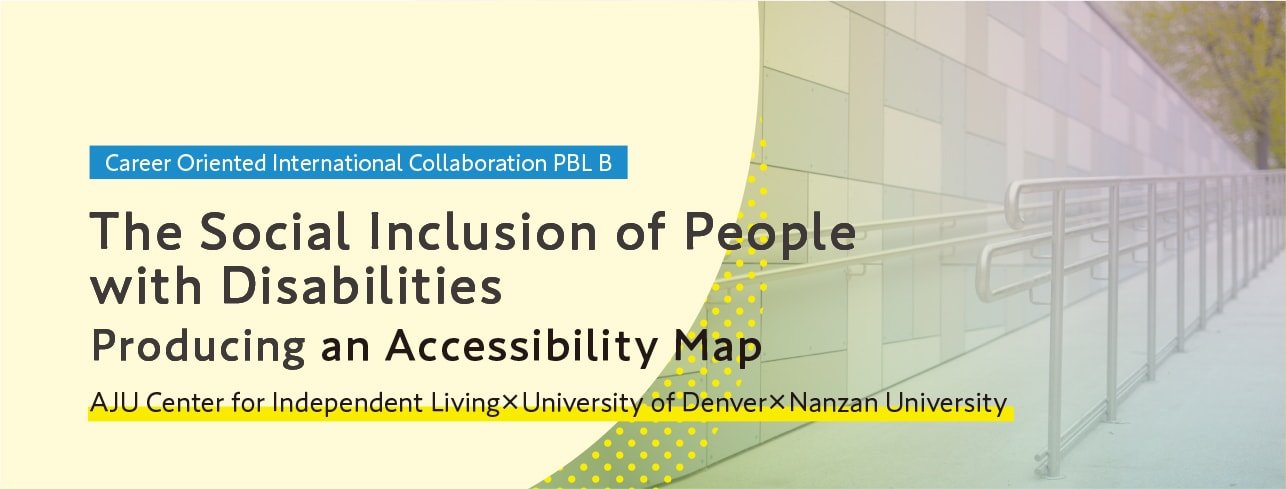
What is PBL COIL?
PBL COIL refers to the advanced-level, practical COIL-based classes in NU-COIL, Nanzan University's unique tailor-made educational program.
Through "Career Oriented International Collaboration PBL" classes, students from Nanzan University and its overseas partner universities work together to address the business and public administration issues faced by companies, organizations, and government agencies.

In this academic year, the AJU Center for Independent Living proposed that we create an accessibility map for Nanzan University as a new project.
A field study was conducted on campus with people with disabilities living in wheelchairs, and the students themselves sat in wheelchairs to experience what it is like to move around in a wheelchair.
We discussed our observations from the field study and the subsequent questions generated from the observations with students at the University of Denver. We compared and discussed the situation and infrastructure of the two campuses while exchanging photographs.
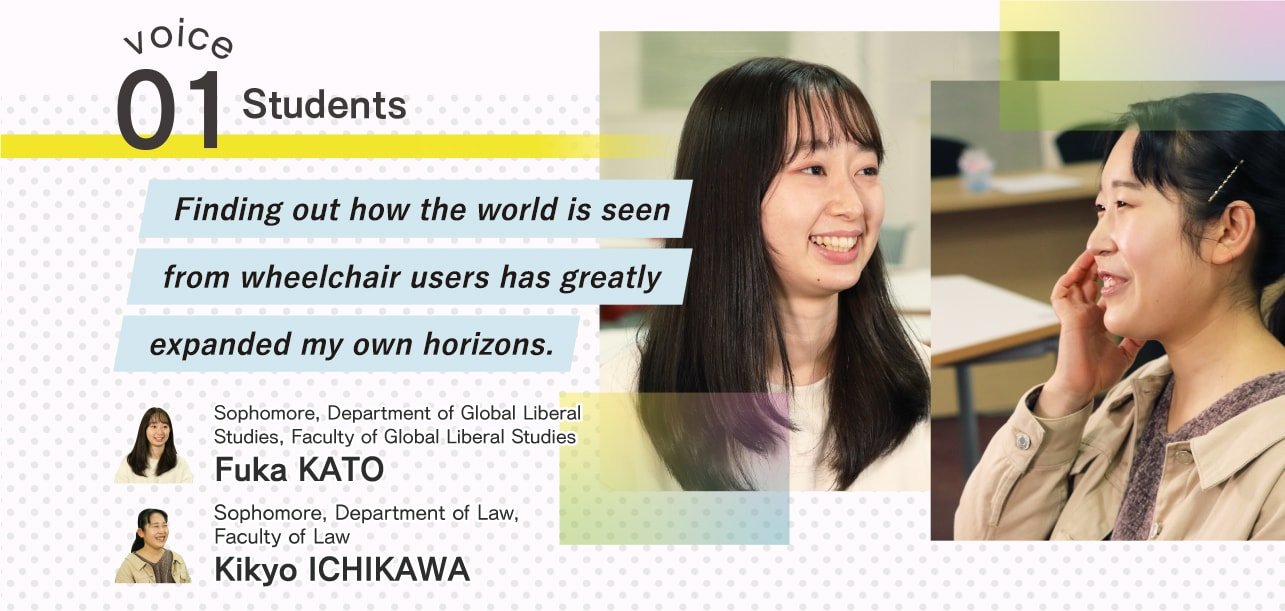
What left an impression on you when you were exchanging opinions and information with students from the University of Denver?
I had no such experiences at all and could not think of anything. I became painfully aware of how this is not something I am well acquainted with.
However, the fact that the older buildings on campus could not be accessed by wheelchairs was common to both universities. We should actively incorporate the good points of each campus.

Tell me how you felt after experiencing fieldwork with members of the AJU Center for Independent Living.
For example, the vending machine button was out of reach, and the entrance to the toilet felt narrow as if it was pressing against me. I felt very uneasy going anywhere alone.
Those small changes had a significant impact on the way I felt.

What are you thinking of when going through the nerve-wracking final presentation?
Otherwise, it will just be an exercise that makes me feel good and makes me think that I am doing this for someone out there.
Therefore, I hope that those who see this map will want to come to Nanzan University, and this will be a step towards creating a better campus.

Think back about the entire process and tell me what you have learnt and how you felt.
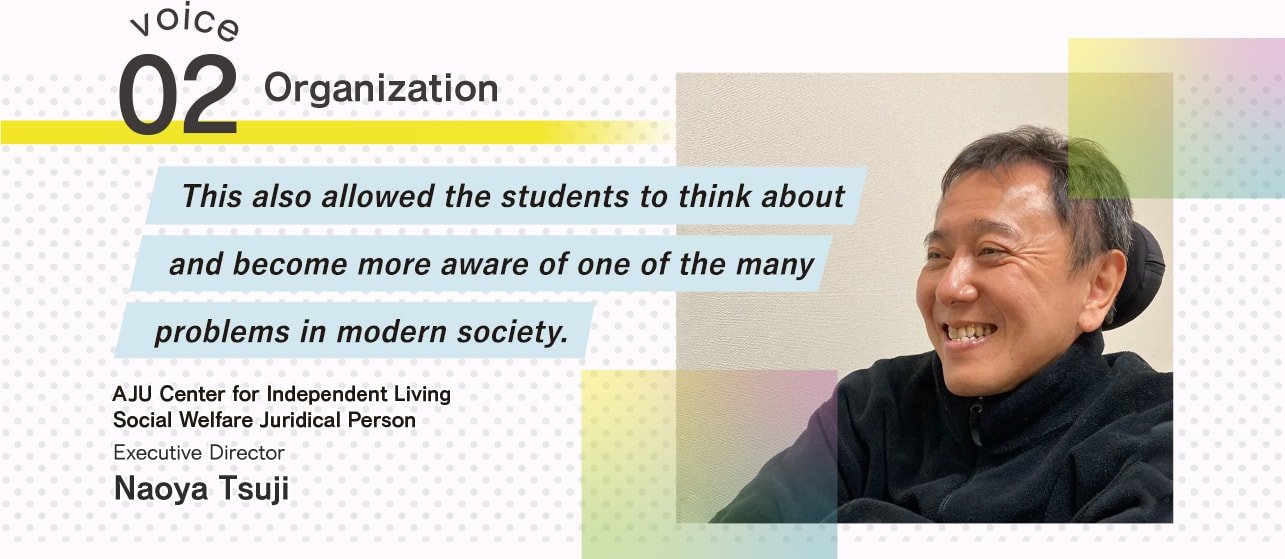
Tell me about your feelings and expectations when this project was conceptualized and its implementation finalized.
Tell us what you felt through your interactions with students in special lectures and fieldwork, and what left you with a deep impression.
In particular, during the survey, a major achievement was how they realized that there was a problem with the way the Braille blocks were installed for the visually-impaired. In addition, they also decided on their own to include the location of the AED as part of the survey, so I got the feeling that they did some kind of preparatory study and were highly aware and sensitive to the problems that the society is facing.

What are your thoughts and feedback for the students' presentations and proposals?
They used many photographs that they had exchanged with the students at the University of Denver, and I was surprised by how deeply they explored the topic, from thinking about the factors which led to the differences, to the analysis of the legal system and accessibility policies.
What do you think about the idea of universities collaborating with external institutions? From the perspective of an external institution, how are these collaborations meaningful?
I was reminded again that a bi-directional and mutual understanding of one another's perspectives, like what we had with the students this time, is the foundation to the inclusive social structure that the modern society today demands.

Finally, can you tell me about your impressions, any messages which you may have for the students, how you felt about the entire initiative, and so on?
Students will become active members at the forefront of society in the future, and I would like students to understand the importance of thinking about different social problems from various angles, and to consider the perspectives of what people in need may want and how these problems can be solved. Although it was only a short course, I would like to thank everyone involved, as I have discovered many things myself through this journey. Thank you.

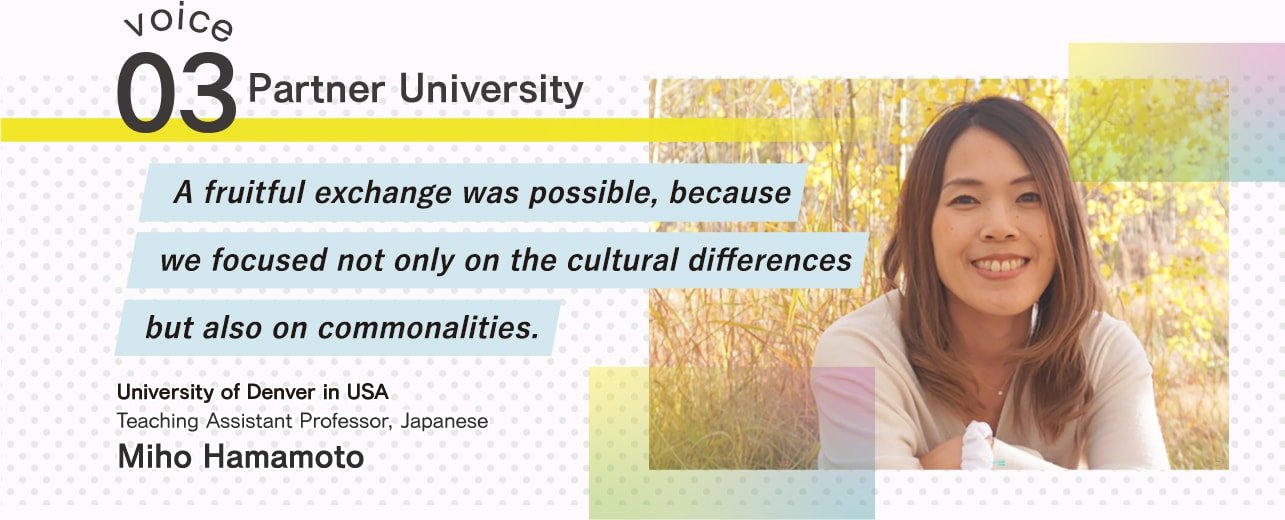
What were the effects of this initiative on students at the University of Denver in terms of Japanese language education?
The students at the University of Denver who participated in this study had only just started studying Japanese, and most students said that they were new to interacting with Japanese people. I think it was a very good experience to be able to communicate with Japanese students using the Japanese language.
Some people said that this exchange increased their motivation, making comments such as "I want to become better at speaking Japanese," and "I want to know about the Japanese culture." In addition to the differences between the American culture and the Japanese culture, I think that it was a fruitful exchange where we tried to find commonalities between the two countries. Since there are many students who want to study abroad in Japan, they said that it was great to have been able to hear directly from students at Nanzan University about their university life and campus.
The students exchanged opinions on the theme of "social inclusion of persons with disabilities." What were the impressions and responses from students at the University of Denver?

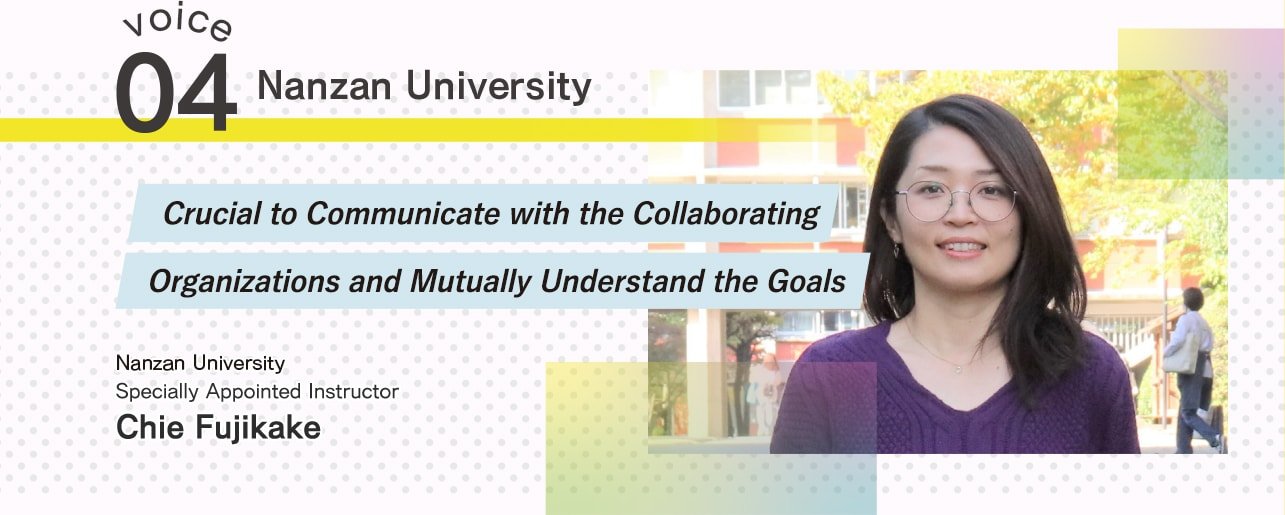
The other day, when I was interviewed for a web magazine produced through the students' own initiative, I was asked, "What is important when you are giving a lecture and what do you pay the most attention to?"
Until last year, I have always given the answer that what is important is to value the opinions and ideas of students. However, after experiencing this year' s PBL COIL B class, I realized again how important communication with collaborative organizations is when it comes to implementing this type of class.
Even if we have the opportunity to get someone to come and give a special lecture, we cannot possibly get someone to come every time and be around to answer questions from the students all the time. Therefore, in order for students to proceed with the project, it is necessary for the teacher-in-charge to be there for the students, to fully digest the content of the special lecture and convey it to the students in a way which is more comprehensible, and to repeat this at necessary intervals. In addition, I realized that it is very important to, if time permits, discuss with the guest lecturer the objective of the course - what kind of expectations we have of the students and what we want them to realize and think about, when it comes to implementing a course of this nature.

At symposiums, other universities sometimes ask questions about how we can build a system of collaboration with external organizations. Of course, we may seek collaboration again from companies and organizations that have a long history of connections with us, but this is not always the case.
In any case, whether a collaboration can be realized depends on negotiation, and it does not mean you can always get the other party to give in to our needs and things do not always go according to our plans and expectations. The same applies not only to companies and organizations but also to collaborations with overseas universities.
However, in order for the collaboration to be a satisfactory arrangement and to get some kind of mutual agreement, I think what we need is to clarify a common purpose and understand each other's goals. It may sound obvious, but it really dawned on me how important this is when I tried to carry it out.
I look forward to building new collaborative systems, while learning from my teaching experiences so that I can challenge new possibilities in the future.

Future Prospects of PBL COIL
Use of LMS
By having affiliated schools and Nanzan University's students and faculty exchange information in real time on the learning management system platform, it is possible to advance real-time communication that is unique to COIL classes even further.
We plan to expand the use of this LMS in the future.
Creating Relations between Basic COIL and Academic COIL
We aim to establish a step-up type of learning model in which the different categories of COIL classes--Basic COIL and Academic COIL--are prerequisites for PBL COIL.
NU-COIL Career Oriented International Collaboration
Companies and organizations that are interested in collaborations with this university through NU-COIL (e.g., PBL COIL and internships) are
welcome to contact us using the e-mail address provided below.

